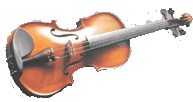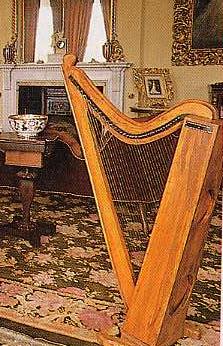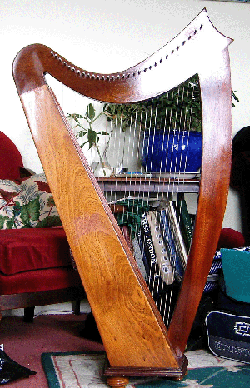|
|
List of 1,000 Irish Tunes. |
| |
|
In the jump menu above you will find over one-hundred Irish tunes, choose a title to hear it played. For all of them we are deply indebted to Frank Lennon and Rosemary Marr who have kindly allowed us to play a few of their tracks on this site, click the link below to meet visit their websites. Frank Lennon's website Frank on You Tube Rosemary's site |
||
|
|
It was the Dublin of 1742 that Handel chose to give his first performance of the Messiah. The folk music of the people was still enjoyed at weddings and country dances but the new European music swept fashionable Dublin . The Belfast Harp Festival of 1792, was a brave attempt to record the disappearing harp music, from some very old harpers (97 being the eldest, 15 the youngest).
The poignancy of some of these songs never fail to touch the heart, they tell of Napoleon's Grand Army, mostly young men of eighteen and twenty the majority of which did not return from the disastrous assault on Moscow. The Irish composed many anti-recruitment songs during this period, such as 'Arthur McBride,' and 'When Johnny Comes Marching Home.' Thomas Moore, friend of Robert Emmet, had left Ireland after the failed rebellion of 1798, with his good looks, charm and wonderful singing voice, he was soon a success in the drawing rooms of English society. His romantic poetry he set to Irish airs, which he did not scruple to fit to his words. His song are famous the world over, 'Tara's halls', 'The Last Rose of Summer', 'The Minstrel Boy', to name but a few, Moore died in 1852. The changes in society that the Industrial revolution
brought, were reflected in music, the growing in popularity of the new
pianoforte, which could play chromatically, insured that the modal harp
faded in fashion along with other folk instruments such as elbow pipes. The Irish Diaspora, took their music to the new world. In 1700, many Protestants left in search of religious freedom, among whom were the Ulster men who were signatories of the American Declaration of Independence. These people brought with them the Scots Irish, jigs and reels, that can be heard now in the bluegrass music from the Application mountains were many of them settled. It can also be heard, mixed with the music of the African slaves, in the structure of the blues. Captain Francis O Neill (1848-1936) of Tralibane near Bantry, County Cork, after his family emigrated to America, joined the Chicago police, were he rose to senior rank in the early years of the twentieth century. Music was in the family and with his mothers encouragement, he listened to, and made notes on, the many traditional Irish singers living around Chicago. A fellow police officer, James O Neill (No-relation) from County Down, collaborated with him, and together compiled, several volumes of popular folk and dance music of Ireland, which they then published. This valuable musical legacy, they left to the University of Notre Dame in Indiana. Subsequent Irish folklorists and musicians, have been enriched by their foresight in collecting and preserving, this musical heritage, found so far from Irelands native shore. These have been published in many different editions, as ONeills Music of Ireland, and ONeills Anthology of a Thousand Irish Tunes, and ONeills Dance Music, and are available to buy in music shop's world wide. Dublin in the late 1800s early 1900 saw a revival of interest in all thing Celtic, W B Yeats and Lady Gregory support for an Irish theater. This Celtic renaissance spilled out into all the arts. The Dublin of 1902 saw the building of the McFall harp, designed to emulate the harps of old. George Petrie published his collection of Ancient Music of Ireland in 1895 this was another valuable source for music of the past to be played in newly fashionable Celtic revival. Tinnpan Alley published many a song to comfort the Irish emigrant, making their exile lessening the homesickness with a song about Galway Bay or the Little Oul House in the oul County Down. Some of these tunes had a real Irish feel to them , but others, must have been written by the in-house musician, such as The Irish Emigrant, words written by Lady Dufferin, about a widower having buried his wife and child leaves for a America, the tune is less than memorable. Harry Cohan was one of the greatest Irish American song writer's penning Yankee Doodle Dandy ?????need to get more names find what was his Irish name. Hollywood made many films about Ireland, none as big or more popular that John Ford's "The Quiet Man" staring John Wayne and Maureen O' Hara. The poignant sad theme tune Innisfree was written by John Farrell l, a policeman ????? from Co. ????????who had never left Ireland, but somehow, expressed exactly the feelings of the exile about the loss of their homeland and their homesickness because of it.. He was not credited for this wonderful song on the films rolls which went to the cunductoe of the orchestra, which was the Hollywood custom at the time.. In the 1950's and 60's an interest in Folk music was re-awakened. The Clancy Brothers were taking the old songs to America and making them their own, The Dubliners brought to life the street songs, with an unparrelled vibrant raucous voice. Sean O'Riarda was a serious classical musician and composer, who's work is resplendent with Irish motif's. He was instrumental in bringing, ancient written music to ears that were astonished by their beautiful melodies. He thought that the great Irish harps strung with silver strings were silenced for ever, that the Harpsichord was the closest in sound he could find to the Irish harp. At The Gaiety Theater in 196???, he brought together music and musicians, that were to evolve into the Chieftain's. In these arrangements of the ancient music, you could imagine the High Kings in their great halls. He died at the tragically early age of 42, having returned to us so much of our past musical heritage, leaving us his own wonderfully sweet evoctive Irish music. The Chieftains revived the old music bringing it to life with great skill. The way the instruments weave their spell together, it is a magical experience. They successfully brought the harp and the pipes together, with fiddles drums, flutes and whistle, and blended together a unique Celtic expression that could and did play with indigenous folk musicians the world wide, as well as singers such as Van Morrison and Marianne Faithful, playing with such diverse musicians, as the classical flute player James Galway or The Rolling Stones,.and many many more.. As an arranger of music, Paddy Malony is an artist, as a piper he is a master. The late great Derek Bell, made popular the folk harp, and insured that is is now beginning to be played widely across the world. They are truly world statesmen, bringing us together in peace through music.
|
||||||
|
|

 part music played in its many myths. The harp of the
part music played in its many myths. The harp of the  describes
the Norman soldiers being entertained by girls with harps and conversation.
describes
the Norman soldiers being entertained by girls with harps and conversation.
